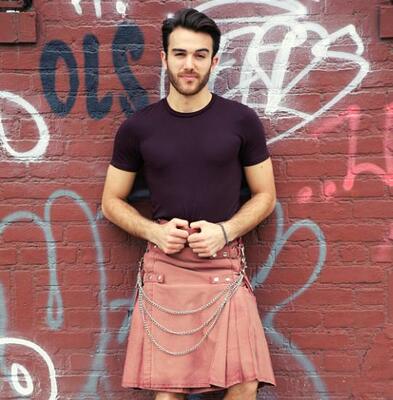- 1-905-452-8193
- Contact Us
- Member Login
- Get Listed Today
- 220,911 members

When you wear a kilt, you are helping to preserve a style of clothing that is not as popular as it once was. The kilt has been dressed most traditionally, and it should be preserved for future generations to come.
As a society, we need to make sure we do not allow fashion trends to dictate what people should wear, but instead embrace tradition and heritage. Such as Scottish kilt and hybrid kilt.
Here's a short history of Scottish Kilt
In Scotland, Kilts have deep cultural and historical roots. They're a time-honored symbol of patriotism, and they're carefully stored in between uses. The term "kilt" is derived from the Norse word kjilt, which refers to "pleated," and implies to clothing that is tucked up and covers around the body. The Norse were all over Scotland, mostly uninvited, and it's a nice irony that the word for kilt comes from them.
Kilts were first mentioned in the year 1538. The Gaelic-speaking Scots Highlander men wore them as full-length garments. Also, the modern knee-length kilt did not appear until the early 18th century.
Kilts were originally white, brown, green, or black. Clanspeople dyed their wool with plants, mosses, and berries. They developed plaids for specific clans over time, the colors most likely based on which natural dyes were nearby. Tartan kilt or cloth was born from these plaids.
Below is the list of health benefits by using kilt:
1. A kilt lowers the risk of DVT: Wearing a high-quality kilt from an online retailer like UT Kilts will not only improve your range of motion but will also help prevent the onset of medical conditions like deep vein thrombosis.
While deep vein thrombosis can occur at any time, it is most commonly associated with prolonged periods of inactivity, such as when traveling long distances.
Avoiding wearing any tight-fitting clothing – especially around the waist and legs – is one of the most important precautions to take when at risk of DVT. Tight pants can impair blood circulation in the body, causing blood clots to form.
Wearing a kilt while traveling or sitting for an extended time behind a desk or in front of the TV allows you to move your legs more easily, which may save your life.
2. A kilt aids in body temperature regulation: Wearing a kilt is one of the simplest yet most effective ways to stay cool as the blistering summer heat approaches.
Traditional long pants, as well as shorts, generate a lot of heat and may contribute to the onset of a variety of conditions such as dehydration and heatstroke. Kilts are usually made of a durable yet lightweight fabric material that is open at the bottom to allow air to circulate and keep your legs cool.
Surprisingly, a kilt can be worn in colder weather without leaving you feeling cold, especially when paired with a warm shirt and jacket.
3. It has the potential to improve your mental health: According to a study published in JAMA Psychiatry, nearly 31 percent of American men have experienced depression at some point in their lives. Also, men are four times more likely than women to commit suicide. Wearing a kilt can improve your mental health in addition to preventing blood clots and heat stroke.
Wearing a kilt has been linked to increased self-confidence because it not only increases your sex appeal but it also gives you something interesting to talk about. In turn, it has the potential to significantly reduce the prevalence of bouts of both anxiety and depression.
The Bottom Line
The kilt is one of the most versatile pieces of clothing in the world. It can be worn for a variety of occasions, from casual day-to-day wear to formal occasions. While wearing a kilt is not essential for living well, it does have some positive health benefits.
We've outlined different ways that wearing a kilt can improve your health below. Are you looking to add more benefits to your wardrobe? Let us know your thoughts in the comment section below! Also, feel free to contact us, in case of any queries.
